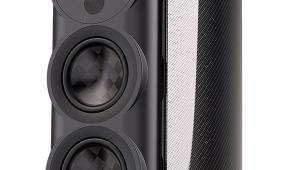Vivid Audio Giya G1 Spirit loudspeaker Sidebar
In every monopole loudspeaker, rear radiation from the drive units is contained within a cabinet, but designers need to engineer that containment without audible reflections and resonances within the enclosed air space. In 1965, Arthur Bailey of the Bradford Institute of Technology tackled this with an acoustic variant of an electrical transmission line. In electronics, transmission lines are used to convey high frequency signals with minimal degradation due to inductance and capacitance. Bailey's acoustic transmission line differed as its purpose was to absorb rear radiation down to low frequencies, but like the electrical line it still aimed to eliminate reflection and resonance.
Bailey's transmission line was like a folded horn in reverse, with the mouth immediately behind the driver and the narrower throat some distance away – at least a quarter of the acoustic wavelength of the lowest frequency handled. Long-fibre wool within the line gradually absorbed the rear-directed sound. When Laurence Dickie refined this idea for the B&W Nautilus, using continuously tapered horn absorbers of appropriate length behind each drive unit, B&W hoped to patent the idea. But they'd been beaten to it in 1976 by two (French and American) inventors whose patent, US3997020, describes something similar, albeit not in the context of loudspeakers. KH

















































